Decode your car's fuel system, piece by piece
Let's go ahead and dive deeper into what a vehicle fuel system is, what it does, and what makes it work.
We all know that fuel is the lifeblood of the vehicle. Without it, your engine will not run. But have you ever wondered what happens to the fuel every time you step on the gas pedal? What chemical changes does it have to go through to bring power into the engine?
Making those chemical changes possible is the job of the vehicle fuel system. Let's go ahead and dive deeper into what a vehicle fuel system is, what it does, and what makes it work in this article from Philcarnews.com.
The vehicle fuel system and how it works
Our body's vascular system carries blood, oxygen, and nutrients throughout the body. That same principle applies to the vehicle fuel system in the car.
A vehicle fuel system acts as the fuel storage and supplies the fuel from the tank to the engine. Once in the cylinder chamber, the fuel mixes with air and then gets vaporized. The engine cylinder then compresses and ignites the gas to produce power for the engine.
Vehicle fuel systems may differ depending on the kind of engine the car has. But even so, they all do the same job of supplying the right amount of fuel to the engine.
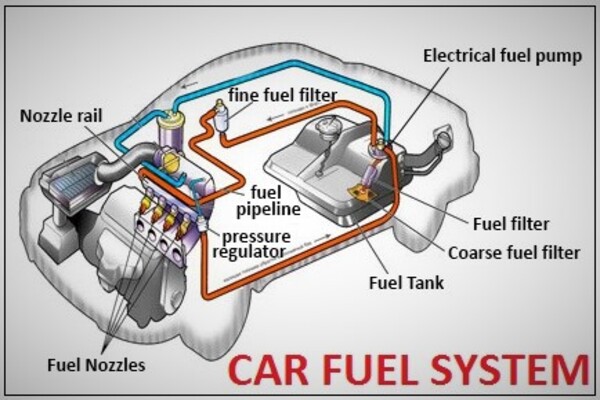
A vehicle fuel system acts as the fuel storage and supplies the fuel from the tank to the engine
>>> Related: Bad gas mileage - What you need to put in mind
The vehicle fuel system consists of the following parts:
The fuel tank
The fuel tank is a container that holds the fuel. The material used to make a fuel or gas tank can be high-density polyethylene, steel, or aluminum. Every time you fill up, the gas makes its way into the tank via the fuel filler neck. The sending unit then tells the gas gauge how much fuel is already in the tank. Modern gas tanks feature more emission controls to prevent vapor leaks.
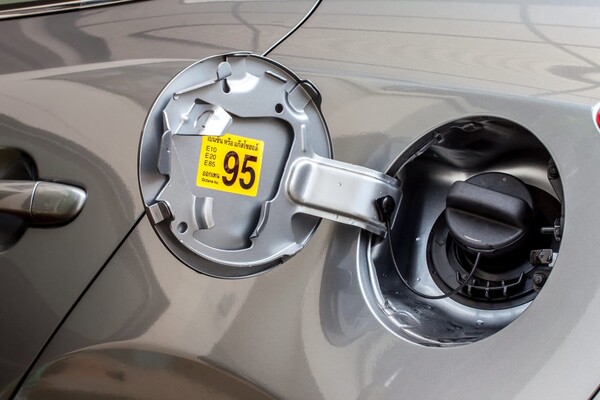
The fuel tank is a container that holds the fuel
The fuel lines
The fuel lines and hoses allow the fuel to travel from the storage tank to the engine. The main fuel line lets the fuel pump siphon out the fuel from the gas tank. The fuel flows from the pump to the carburetor or the injection system's metering section.
Double-wall steel tubings make up the fuel lines. These are attached to the frame, the engine, and other units of the fuel system. Fuel hoses are synthetic rubber hoses. They are mounted between parts where severe vibrations happen.
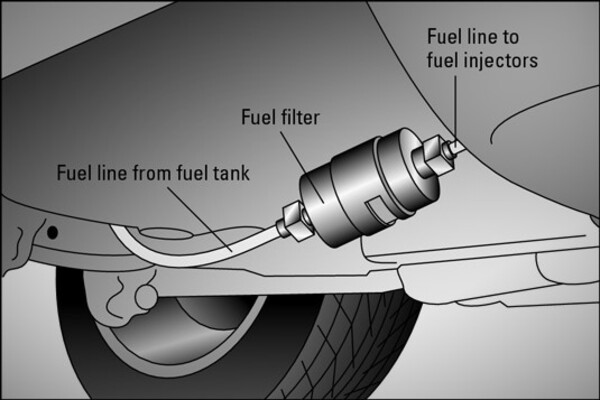
The fuel lines and hoses allow the fuel to travel from the storage tank to the engine
The fuel pumps
Fuel pumps can be mechanical or electric. Older engines with carburetors use mechanical pumps. A mechanical pump is a diaphragm pump that's generally attached to the engine. The up and down action of a rocker arm, attached to the eccentric cam on the camshaft, pumps the rubber diaphragm. This action draws the fuel out from the gas into the pump and pushes it to the carburetor.
Engines with fuel injection use electric fuel pumps. Electric fuel pumps are usually located near or inside the fuel tank. It pumps fuel from the gas tank to the injectors. Electric fuel pumps push fuel under high pressure. This allows injectors to spray the gasoline (or diesel) into the engine.
>>> Related: FAQs about Car's Fuel and Air Filters
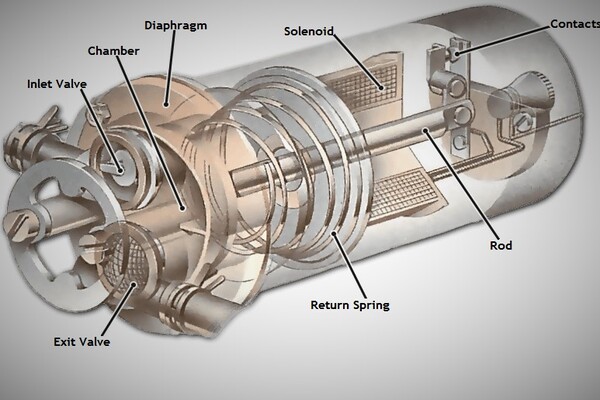
Fuel pumps can be mechanical or electric
The fuel filters
Dirt could clog the carburetor or fuel injector and affect engine performance. Unfiltered fuel can contain contaminants like dirt and rust particles.
Fuel injectors, however, are more susceptible to damage caused by this debris. This harmful debris can speed up the wear and tear of fuel pumps and injectors. A fuel filter removes and prevents dirt and rust particles from wreaking havoc in the engine.
In general, cars use two filters, one inside the gas tank and another in a line to injector or carburetor. Fuel filters are often made of paper material and are generally made to be disposable. Although some filters can be made from stainless steel or synthetic material.
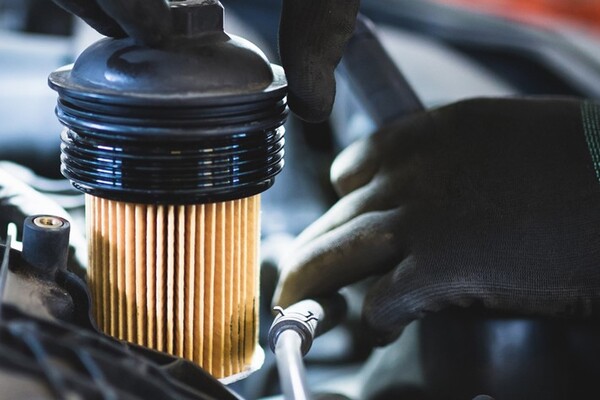
Fuel filters are often made of paper material and are generally made to be disposable
The fuel injection/carburetor
A carburetor is a device designed to mix just the right amount of air and fuel to make the engine run. This action is possible with the help of an air pipe and a fuel pipe connected to it. The carburetor's two valves make sure that the air to fuel ratio is perfect for the current driving condition.
So, how does a carburetor works? An opening at the top of the carburetor lets air in. The air goes through a passage in the carburetor that narrows and then widens again. The narrow part, which is called the venturi, forces the air to speed up and create a vacuum. This then causes the gasoline to be drawn out from the jet.
The throttle plate then regulates the amount of air entering the engine. Pressing on the accelerator pedal activates this throttle plate.
Modern cars now use a fuel injection system. A fuel injector is a computer-operated mechanical device that sprays a controlled amount of fuel into the engine. This allows fuel injectors to improve fuel efficiency and lower engine emissions.

A carburetor is a device designed to mix just the right amount of air and fuel to make the engine run
The Engine Contro Unit (ECU) controls the fuel injectors. Internal sensors determine the engine conditions and fuel requirements. The internal sensors then relay the information to the ECU. The ECU then commands the injector, which consists of a small electric valve, to spray the fuel through a small nozzle.
The nozzle atomizes the fuel — breaks the fuel into small particles allowing them to burn quickly. The ECU then controls how long the injector stays open, also called the pulse width.
It is important to have the vehicle fuel system regularly maintained. This will prevent issues that could, later on, cause your car to break down.
Commons issues with the fuel system include failing fuel pump, dirty fuel filter, and leaking fuel injectors. If you experience that your vehicle will crank but won’t start, or suddenly makes a jerking movement, it could be a sign of a deteriorating fuel system.
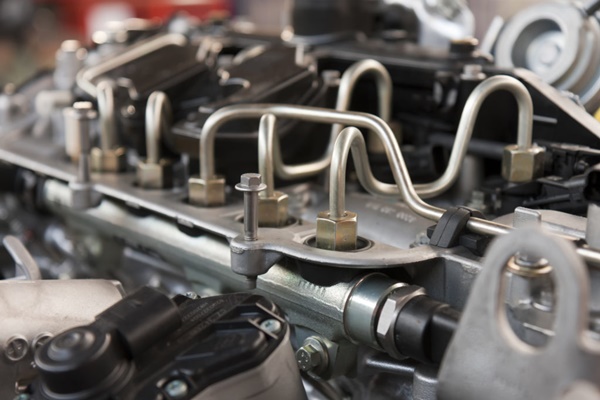
It is important to have the vehicle fuel system regularly maintained
Fuel system maintenance will involve chemical cleaning and replacing worn-out parts. Chemical cleaning will help prevent deposits from damaging components in your fuel system. Deposits buildup can affect fuel flow and cause engine problems in the future.
Keeping your fuel system clean and in tiptop shape will ensure you enjoy stress-free and smooth driving. Also, fuel system maintenance results in better fuel economy as your engine runs more efficiently.
>>> Follow our tips and advice section to help your car!
RECENT ARTICLES









